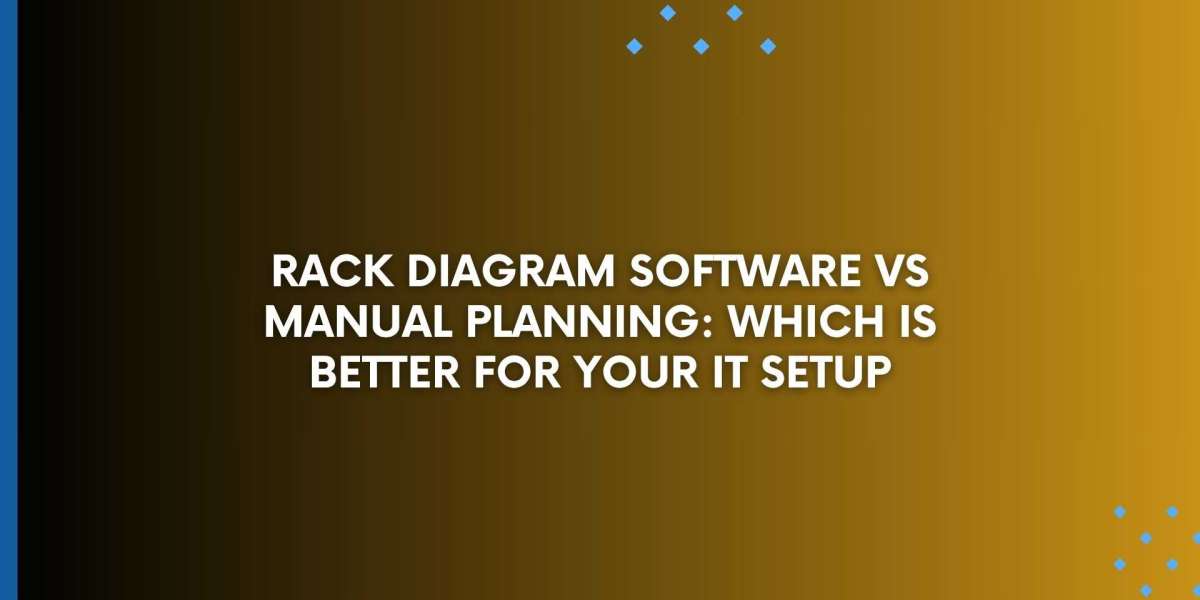Designing an organized and reliable IT setup starts with careful planning of how equipment is arranged and connected. Whether you are setting up a server room, data center, or AV control system, the rack layout plays a key role in system performance, maintenance, and scalability. Traditionally, many professionals relied on manual planning methods like sketches or spreadsheets to map out rack layouts. Today, however, rack diagram software offers a faster, more accurate, and often more flexible solution. In this blog, we will compare rack diagram software and manual planning so you can decide which approach is better for your IT setup.
The Importance of a Well Planned Rack Layout
Before diving into the comparison, it is important to understand why rack planning matters. A well planned rack layout ensures that equipment is mounted securely, receives adequate ventilation, and is easy to access for maintenance or upgrades. It helps prevent issues like overheating, cable tangles, and unbalanced weight distribution. Good planning also makes future expansions or changes easier because you have a clear roadmap of what is installed and where space is available.
Whether you choose manual planning or rack diagram software, the goal is the same — to create a layout that supports reliability, efficiency, and ease of management.
Manual Planning: The Traditional Approach
Manual planning usually involves creating hand drawn sketches, using simple graphic tools, or mapping out rack layouts in spreadsheets. Some teams may use basic drawing programs like PowerPoint or Visio without specialized templates. The process typically requires measuring equipment dimensions, calculating available rack units, and manually arranging components within the plan.
Advantages of Manual Planning
Low cost: You can get started with tools you likely already have, such as paper, spreadsheets, or general purpose drawing software.
Flexible format: Manual sketches can be adapted on the fly during meetings or site visits without needing special software.
Simple for small setups: For a single rack with minimal equipment, manual planning might be sufficient if the design is straightforward.
Disadvantages of Manual Planning
Time consuming: Manually creating and updating diagrams can take a lot of time, especially for larger or more complex systems.
Prone to errors: It is easy to make mistakes with measurements, spacing, or equipment placement when planning by hand.
Limited documentation quality: Hand drawn or basic diagrams often lack the detail and polish of professional documents.
Harder to scale: As systems grow, manual planning becomes more difficult to manage and update.
Rack Diagram Software: The Modern Solution
Rack diagram software is designed specifically for planning and documenting rack layouts. These tools often come with libraries of equipment models, drag and drop functionality, and features that calculate rack space, weight distribution, and power requirements automatically. Examples include XTEN AV, NetZoom, and dedicated rack diagram modules in IT asset management platforms.
Advantages of Rack Diagram Software
Accuracy and consistency: Rack diagram software ensures that equipment dimensions are correct and that layouts comply with industry best practices.
Faster updates: It is easy to modify diagrams as equipment changes or system designs evolve. Changes are reflected instantly in documentation.
Professional documentation: The software produces polished, easy to read diagrams that can be shared with stakeholders, installers, or maintenance teams.
Integration with other tools: Many platforms link rack diagrams to schematics, cable schedules, or asset databases for a complete documentation package.
Support for large systems: Rack diagram software is ideal for data centers or multi rack installations where manual planning would be too complex.
Disadvantages of Rack Diagram Software
Learning curve: Some platforms can be complex and require time to learn, especially for users unfamiliar with CAD style tools.
Cost: Professional rack diagram software usually requires a subscription or license, which is an added expense.
Dependency on digital tools: You need a computer or tablet to access and edit diagrams, which may be a limitation in certain field situations.
Which Option Is Better for Your IT Setup
The right choice between manual planning and rack diagram software depends on several factors.
Size and complexity of the setup: If you are working on a small IT closet with a single rack, manual planning might be sufficient. For larger installations, rack diagram software is almost always the better choice.
Frequency of changes: If your setup is static, manual plans might work. If you expect frequent upgrades, expansions, or changes, software makes updates faster and more reliable.
Documentation needs: If you need to share professional quality documentation with clients, facilities teams, or auditors, rack diagram software offers a clear advantage.
Budget: For teams with very limited budgets, manual planning may be appealing. However, consider the time savings and error reduction that software provides — these benefits often justify the investment.
Best Practices for Either Method
No matter which method you choose, keep these best practices in mind:
Plan for cooling and ventilation: Leave space where needed to promote airflow.
Label all equipment clearly: Whether in a manual drawing or software generated diagram, clear labels make the plan easy to follow.
Leave room for expansion: Plan ahead for future equipment so you do not have to redo the layout when your system grows.
Update plans regularly: A rack diagram is only useful if it reflects the current system. Keep it updated as changes occur.
Conclusion
Both manual planning and rack diagram software can help you design a functional IT rack layout, but each has its strengths and limitations. For small or simple setups, manual planning might be enough. For larger, dynamic, or mission critical environments, rack diagram software offers the precision, efficiency, and professionalism needed to support modern IT systems. By understanding the differences, you can choose the approach that best fits your project’s needs and ensure your IT setup is organized, reliable, and ready for the future.
Read more: https://soundsightav.odoo.com/blog/our-blog-1/top-7-best-floor-plan-software-for-2025-free-paid-12




